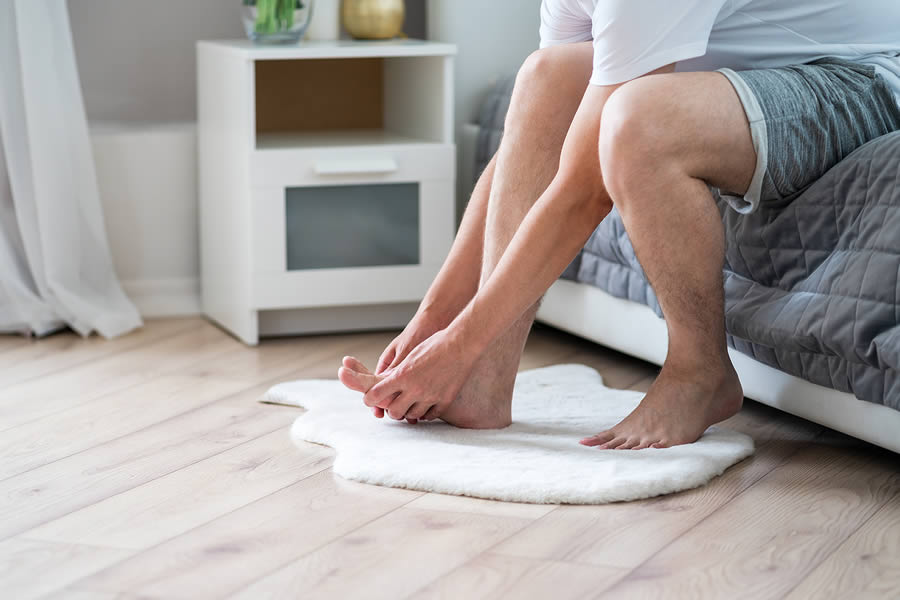
Winter can be a challenging time for foot health, with the colder temperatures and damp conditions leading to a range of foot problems. In this brief article brought to you by Podiatry Centers of Maryland, we share some common foot problems that can arise during the winter months, along with tips on how to manage them. If you are experiencing any foot problems, it is important to seek the advice of a licensed podiatrist, or foot doctor. With the right care and attention, you can keep your feet healthy and pain-free all winter long. Contact Podiatry Centers of Maryland to schedule a convenient appointment, or visit one of our clinics to request a walk-in appointment.
Dry and cracked skin on the feet is a common problem that many people experience, especially during the winter months when the air is cold and dry. This condition is also known as xerosis and can be uncomfortable and even painful if left untreated. When the skin on the feet becomes excessively dry, it can crack and split open, leaving the foot vulnerable to infection.
Some common causes of dry and cracked skin on the feet include the cold temperatures and dry air, hot showers and harsh soaps which can strip the skin of its natural oils, certain medical conditions, and natural vulnerability due to aging.
If left untreated, dry and cracked skin on the feet can lead to more serious conditions, such as infection and cellulitis. Managing this condition calls for moisturizing, exfoliating, hydrating, avoiding hot showers, and wearing appropriate footwear.
Chilblains are painful and itchy red patches that can appear on the body’s extremities, like toes and fingers, in cold and damp conditions. The condition is caused by the body's abnormal reaction to cold temperature, causing the blood vessels in the affected area to constrict, then expand rapidly when rewarmed, resulting in inflammation and swelling.
To prevent chilblains, avoid exposing your feet to sudden changes in temperature. If you do get chilblains, keep your feet warm and dry, and apply a soothing cream to the affected areas. If the condition is severe or does not improve with self-care measures, it is important to consult a skilled podiatrist for further evaluation and foot pain treatment.
Fungal infections, such as athlete's foot, are more common in the winter months as damp conditions create the perfect environment for fungus to thrive. These infections thrive in warm, moist environments, such as sweaty socks and shoes, and can be exacerbated by wearing heavy socks and boots during the colder months. Symptoms of a fungal infection include itching, burning, and redness of the affected area, as well as cracking and peeling of the skin.
To manage fungal infections during the winter, it's important to keep your feet clean and dry, wear well-fitting, breathable shoes and moisture-wicking socks, and apply moisturizer regularly to keep the skin on your feet soft and supple.
If you are experiencing persistent foot pain or discomfort, it's important to seek the help of a podiatrist in Lanham, MD. A podiatrist can evaluate your feet, provide personalized treatment options, and prevent further damage. Residents in Maryland can call Podiatry Centers of Maryland to schedule a convenient appointment or visit one of our clinics for a walk-in.
Everything You Need to Know About Flat Feet You may have noticed that babies usually have relatively flat feet, with a minimal or non-visible arch.…
Read More+How Does a Sprained Toe Happen? A toe sprain can be a painful and immobilizing injury. This common foot injury happens when the ligaments connecting…
Read More+Benefits of Becoming a Podiatrist Becoming a podiatrist, or foot doctor, is a remarkable journey that offers a host of benefits. It is a profession…
Read More+Why Are Your Feet So Ticklish? Ticklish feet have been a subject of amusement and laughter for some and discomfort for many others. The mere…
Read More+